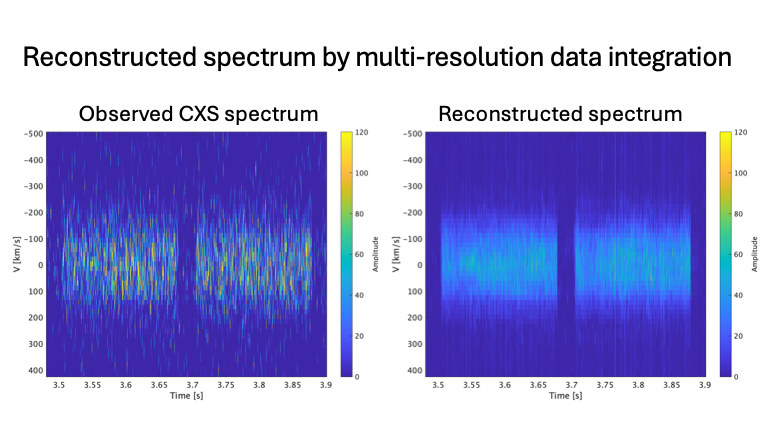Speaker
Description
To achieve high-performance plasmas, it is necessary to measure and understand perturbation components of plasma velocity distribution functions and avoid disruptive instabilities or continuous losses of plasmas by turbulent transport. One of the most reliable and prevailing methods for measuring velocity distribution functions is the charge exchange recombination spectroscopy (CXS). CXS determines the velocity distribution function and, therefore, the ion density, temperature, and velocity depending on the emission intensity, the Doppler broadening, and the shift of an ion emission line 1. However, as in other high-dimensional data measurement techniques, CXS has a trade-off between the resolution in real space, velocity space, and time and the signal-to-noise ratio (SNR). Currently, attempts are being made to improve both the SNR and resolution through improvements in measurement instruments and experimental ingenuities, but such hardware improvements are limited due to development costs and physical constraints. Here we attempt to improve both the SNR and resolution by using a novel data analysis method.
In high-dimensional data analyses, binning axes in dimensions that are not of interest can reduce noise, the effects of missing data and outliers, and data volume, while simultaneously revealing the structure of the original data in the dimensions of interest. Through formulating such binning operations in a Bayesian manner, we developed a multi-resolution data integration method that determines the binning size for each axis that most preserves the structure of the original signal and integrates the optimally binned data for each axis to restore the original signal. We applied this method to CXS data and achieved improvements of the resolution in real space, velocity space, and time, as well as SNR.
This work was supported by JST (Moonshot R&D Program) Japan Grant Number JPMJMS24A3.
Reference
1 Kobayashi, T., M. Yoshinuma, and K. Ida. "Full-image operation of fast charge exchange recombination spectroscopy with high-spatial and high-wavelength resolutions in large helical device." Review of Scientific Instruments 96.3 (2025).

| Speaker's email address | aonishi@edu.k.u-tokyo.ac.jp |
|---|---|
| Speaker's Affiliation | The University of Tokyo |
| Member State or International Organizations | Japan |
